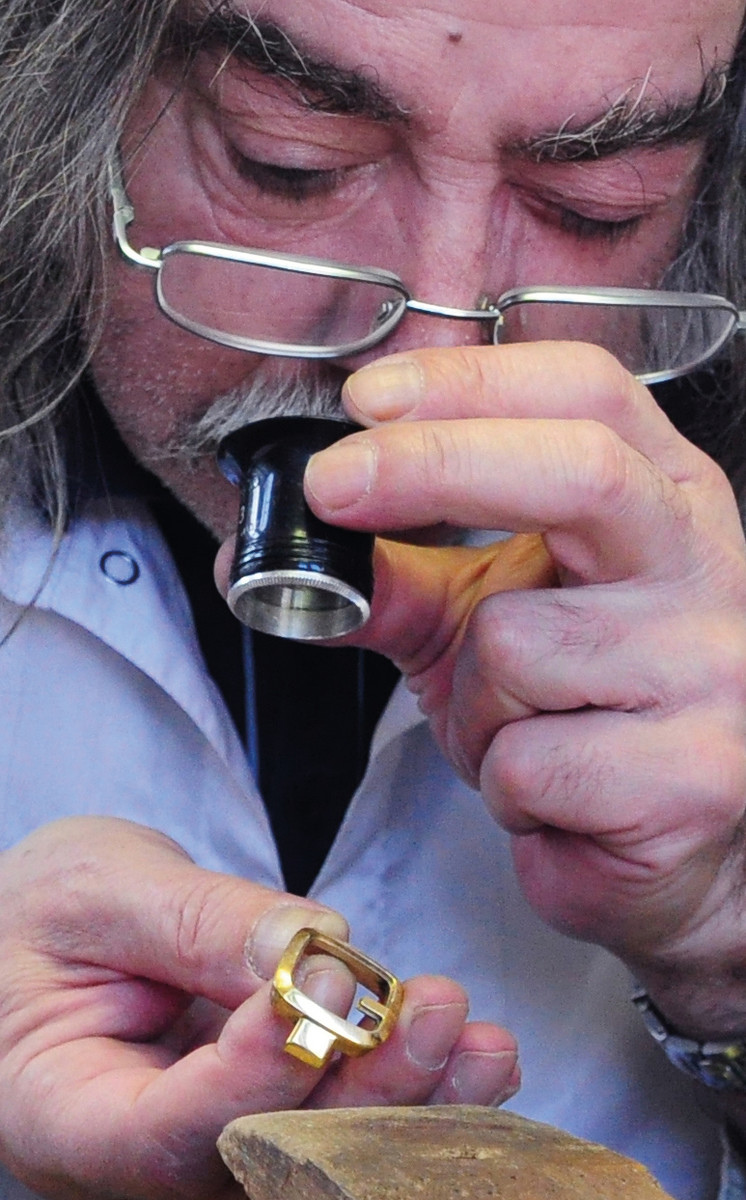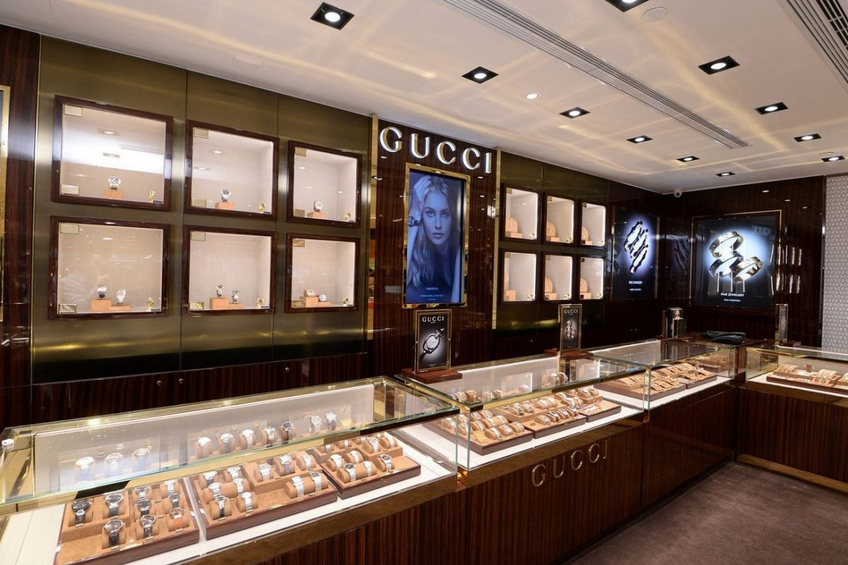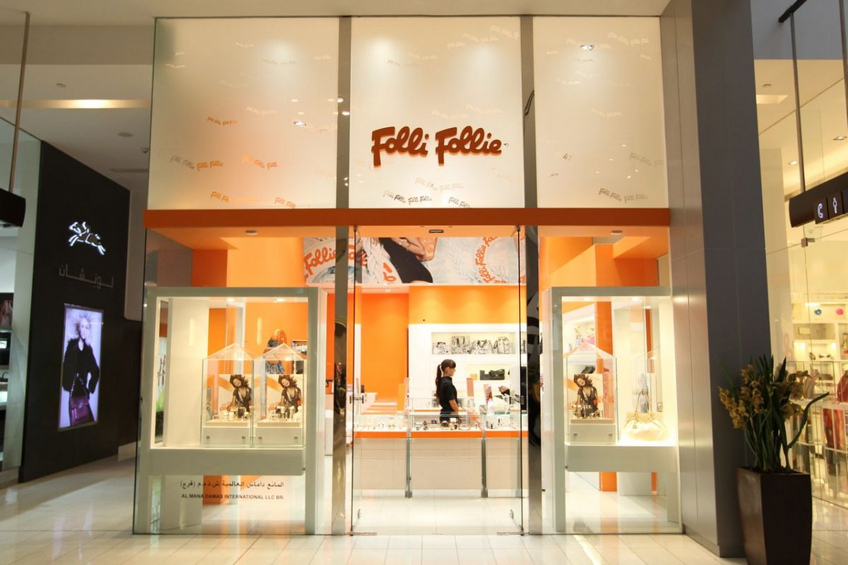

The history of fashion watches 2: from the 1970s to today
During the 1970s and 1980s, two industrial transformations had a major influence on the relation between fashion and watchmaking – the advent of quartz watches and a deep change in the fashion industry.
The arrival of quartz watches, an easily-accessible technology that enabled new actors to produce watches, played a significant role in this double industrial transformation. And so did the commercialization of Swatch watches in 1983. Indeed, the latter caused an upheaval in the watchmaking industry in the sense that the new product turned watches into fashion and design objects that could all of a sudden be bought by everyone. Finally, the fashion industry itself was going through a significant transition towards a new business model that favored the extension of the clientele, thus increasing profits.
Gucci's success story
Although Christian Dior is known to be at the inception of the concept of watches as fashion accessories, the Italian group Gucci was the trend setter in the 1970s.
That was due to the implementation of an organizational model that made them no longer dependant on independent producers and allowed them to gradually internalize and control this function.
Belgian-born businessman Severin Wunderman joined forces with the Italian fashion manufacture. Born in 1938, he emigrated to the United States after World War Two. In the late 1950s, he met Italian goldsmiths Gori and Zucci who were specialized in manufacturing jewelry such as gold chains. Wunderman started the same activity as them, with which he made his fortune. In the 1960s, he signed a business deal with Alexis Barthelay, a small watch producer and one of the precursors of the "private label". He ensured the company's distribution, inter alia, with American retailers.
In 1972, Wunderman met one of the sons of the Italian company's founder, Aldo Gucci, who had also settled in the United States, and obtained the licence to produce Gucci watches. And so, he founded Severin Montres in Irvine (California), a company that bought finished watches from a producer in Bienne (Switzerland).
Gucci watches met immediate successful – it would seem their turnover went from approximately $3 million in their first year to $70 million three years later and $115 million in 1988. And so, for Gucci, watchmaking became an important source of profit (approximately 18% in 1988).

In 1987, Wunderman reorganized his production. He changed the name of his company and transferred the operational headquarters to Lengnau, Switzerland. The American company changed its activity and specialized in distributing Gucci watches in the United States, a traditionally strong market for the brand. The organizational change allowed Wunderman to control his watch supply directly. The company experienced exponential growth for ten years before Gucci acquired it in 1997. Wunderman continued his career at the head of Corum.
The internalization of production was thereafter adopted by leading luxury fashion actors that branched out into watchmaking, such as Chanel and Hermès.
The new role of Hong Kong
However, by then, fashion watches were no longer the prerogative of Swiss producers. The arrival of quartz watches enabled watch producers from Hong Kong, who had specialized in external parts (cases, straps and dials) since the 1960s, to start producing whole watches on their own. They first participated at BaselWorld in 1987.

At that point in time, the aim of Hong Kong watch producers shifted from producing their own watches to the quest for new markets. This is how their collaboration with the fashion industry paid off. The former British colony became an indispensable intermediary between production centers that had been relocated to China (mainly in Shenzhen and Dongguan) in the 1990s, and fashion brands from all over the world that wished to branch out into watchmaking.
Leading international watchmaking groups thus established subsidiaries in Hong Kong to produce licensed private label watches. For example, Seiko founded Time Module in 1987 and produced, amongst others, Georges Rech Paris and Luciano Valentino Italy watches. More recently, in 2006, Richemont bought 10% of the capital of Egana-Goldpfeil, the producer of Pierre Cardin and Esprit watches.
However, other new actors joined the fashion industry.
Greek watches Made in Hong Kong: Folli Follie
One of the best examples of the new role Hong Kong played in the emergence of trendy watches as a new business model is undoubtedly the Greek group Folli Follie. Founded in 1982 by Dimitris Koutsolioutsos, the company, which sold jewelry accessories, launched a watch collection for women in 1994. It has registered a steady growth since the mid-1990s, with a turnover that reached 102 million euros in 2001 and 998 million in 2014. The watches are designed in Greece and Great Britain, while the production is sub-contracted to producers established in China and Hong Kong.

The company's growth came from a diversification of activities (for example, leather craft and perfumes), the internationalization of markets (Asia represented nearly 80% of the sales in 2009) and the integration of distribution. Besides, the company consolidated its position in the fashion accessories sector when it acquired Links of London in 2006, an international jewel and fashion accessory producer.
However, watchmaking is still the company’s main activity. The brand is known nowadays for being a significant actor in affordable fashion watches in Asia.
Read our first article on Fashion and Watches




